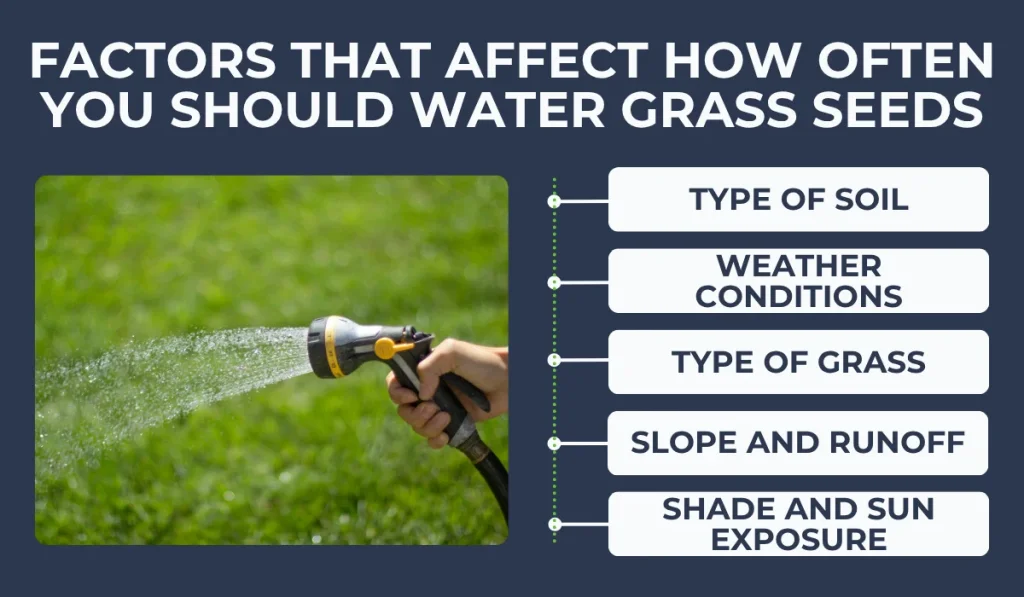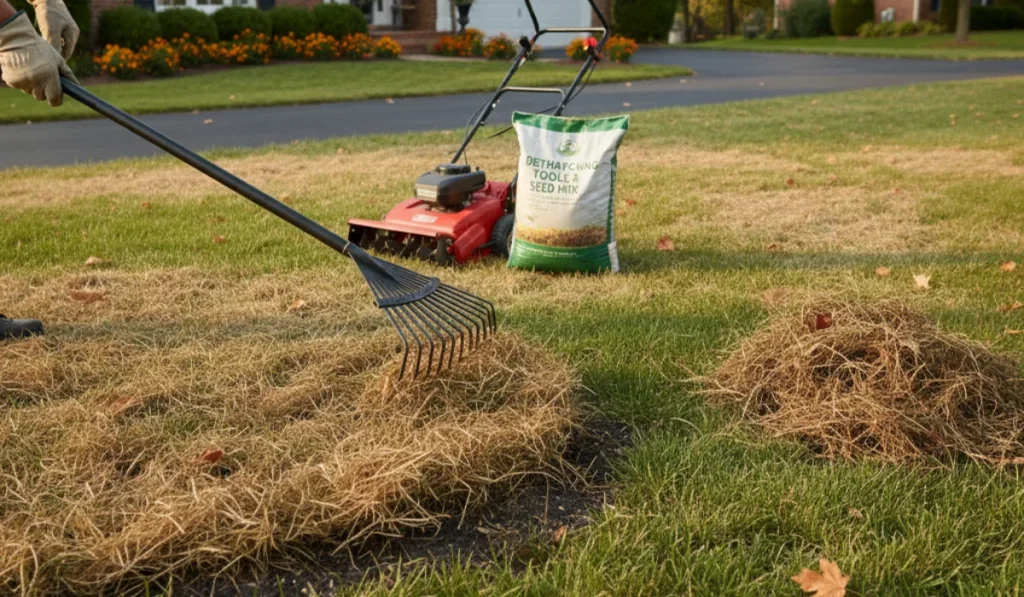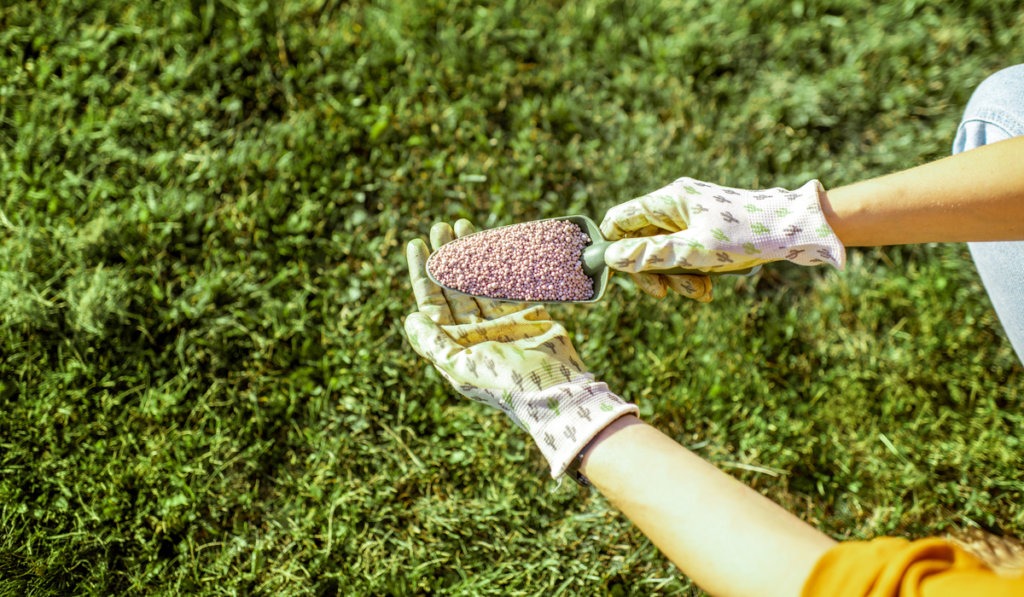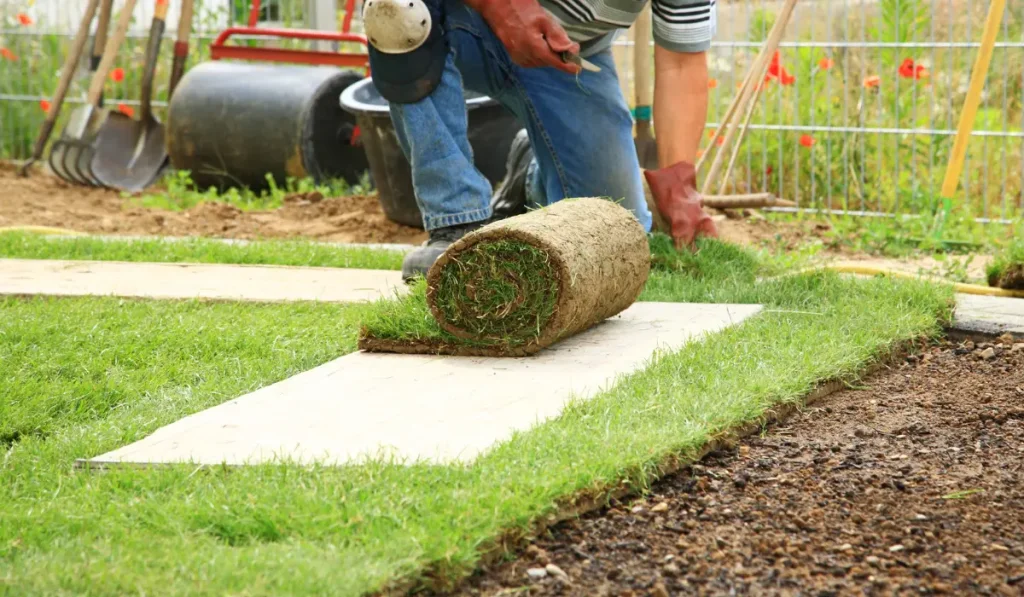Planting grass seed is one of those landscaping projects that seems simple, until you’re out there dragging a hose across the yard in triple-digit heat. Whether you’re filling in bare spots, starting a new lawn from scratch, or trying overseeding for the first time, the success of your lawn depends on nailing your watering schedule.
If you’re a California homeowner dealing with a climate that swings between drought and deluge, knowing how much water to apply and when can make or break your germination process.
Key Takeaways
- A new lawn from seed needs light watering two or three times a day to stay moist and grow.
- Early morning is the best time to water because it helps the soil absorb enough water before drying.
- Watering should change as roots grow, and mowing should wait until the grass reaches three inches in height.
- Watering needs depend on slope, sunlight, grass type, weather, soil condition, growth stage, and seed or sod.
How Frequently Should You Water New Grass Seed?
For a newly seeded lawn, your watering habits in the first few weeks are key to successful grass seed germination. Your goal is to maintain consistent soil moisture 3 inches deep without letting it dry out or become soggy.
That means watering lightly two to three times daily to keep the seed moist and help seedlings establish strong roots.
Best Time of Day to Water
The best time to water is early morning, when evaporation is low and moisture has time to soak in. A sprinkler system can help apply the right amount of water evenly across the seeded area, making it easier to avoid puddles or dry spots.
Too much water too quickly, can cause puddles, lead to runoff, and even wash the seed away, while underwatering slows or stops germination altogether.
Amount of Water to Apply
You’ll want to monitor how much water you’re applying. Aim for about 1/8 to 1/4 inch of water per session in the early stage.
As the new seed grows, you can gradually shift to watering every other day with longer, deeper sessions. This supports root growth and builds resilience, leading to a healthy lawn down the line.
Once the grass begins to fill in, continue regular watering to support the transition. Be careful not to cut too early. Wait until the grass reaches at least 3 inches tall and the blades are standing upright on their own.
Premature mowing can damage fragile roots and set back progress.
Factors That Affect How Often You Should Water Grass Seeds

Several factors influence how often you should water grass seed, and understanding these can help you tailor your watering schedule for the best results.
Here’s what to consider:
Type of Soil
Your soil type plays a major role in how often you’ll need to water.
- Sandy soil drains quickly, requiring more frequent watering to maintain soil moisture.
- Clay soil holds onto water longer but can easily become compacted and waterlogged.
- Loamy topsoil, with a balanced mix of sand, silt, and clay, offers the best support for a consistent watering schedule.
For any type of soil, keeping the top 1 to 2 inches of soil moist during germination is essential. Consider incorporating aeration into your lawn care routine before seeding.
It improves water penetration and helps the roots grow deeper.
Weather Conditions
From hot inland summers to coastal fog, California’s diverse weather conditions affect how much water your lawn will need. High temperatures and wind increase evaporation, requiring more frequent watering.
On cooler or rainy days, you can back off to avoid overwatering.
Type of Grass
The type of grass you’re growing will also influence how you water.
Cool-season grass types like tall fescue, ryegrass, and bluegrass require steady moisture during the germination phase. These grasses are often used in Northern California or inland regions where the climate supports their growth.
Warm-season grasses like TifTuf Bermuda may be more drought-tolerant once established, but they still need consistent moisture as new seedlings.
Slope and Runoff
Planting grass seed on a slope or uneven ground can cause water to run off before it soaks in. Water tends to flow downhill before it can soak in, which can leave higher areas dry and lower areas soggy.
Shorter, more frequent watering sessions help prevent this. Applying a light layer of mulch or straw can reduce evaporation and keep the seed in place.
Shade and Sun Exposure
Shady areas hold moisture longer, while spots in full sun may dry out quickly. Adjust your watering frequency accordingly, and always monitor soil moisture rather than relying on a fixed schedule.
It’s easy to underwater in sunny spots and overwater shaded zones.
Frequently Asked Questions
Can I use tap water to irrigate new grass seed?
Yes, tap water is generally safe for watering new grass seed. However, in areas with high chlorine or salt levels, it may impact germination. If you’re concerned, using rainwater is a good alternative. Avoid letting tap water sit out overnight in open containers, as stagnant water can become a breeding ground for fungus or attract pests.
Should I cover grass seed with straw or mulch after seeding?
Yes, a light layer of straw or mulch helps lock in moisture, protects seed from birds, and reduces erosion. Avoid thick coverage that could block light or trap too much moisture.
How soon after seeding can I walk on the lawn?
Avoid walking on the lawn until grass fills in and reaches at least three inches tall. Foot traffic can compact soil, crush seedlings, and slow down establishment during early root development.



